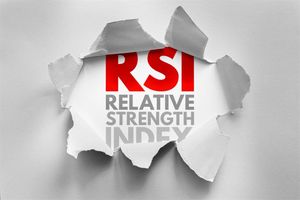
China is vigorously pursuing semiconductor self-sufficiency, a national imperative driven by ambitious industrial policies and escalating geopolitical tensions. As of September 2025, the nation has made significant, albeit uneven, progress towards its "Made in China 2025" goal, aiming for 70% self-sufficiency in semiconductors. While falling short of this ambitious target, with domestic chips currently accounting for approximately 40% of consumption, China's rapid advancements, particularly in mature-node technologies and equipment manufacturing, are already sending ripple effects through global supply chains and intensifying competition in critical sectors like AI.
This relentless pursuit of indigenous chip capabilities carries immediate and profound implications for global markets. The surge in China's mature-node chip capacity is poised to create an oversupply, exerting downward pressure on prices and challenging the competitiveness of semiconductor industries worldwide. Furthermore, the global semiconductor supply chain is experiencing increased fragmentation, as China's drive for self-reliance actively reduces its dependence on foreign suppliers, fostering a more bifurcated technological landscape.
The Dragon's Digital Ambition: A Deep Dive into China's Semiconductor Strategy
China's journey towards semiconductor self-sufficiency is a multi-faceted endeavor, characterized by massive state-backed investments, strategic technological breakthroughs, and a determined response to international export controls. The "Made in China 2025" initiative, launched years ago, laid the groundwork for this ambition, setting aggressive targets for domestic production across various high-tech sectors, with semiconductors at its core.
A significant development in this ongoing saga is the continued injection of capital through the National Integrated Circuit Industry Investment Fund, colloquially known as "Big Fund 3.0." This latest phase has poured approximately 340 billion yuan (US$47.5 billion) into the ecosystem, specifically targeting advanced AI chips, high-bandwidth memory, and critical lithography equipment. While overall chip investment saw a slight decline in early 2025, the surge of over 53% in semiconductor equipment investment underscores China's strategic focus on building a fully indigenous supply chain, from design to fabrication.
Key players are at the forefront of this national push. Semiconductor Manufacturing International Corporation (SMIC) (SSE: 688981, HKG: 00981) is China's largest foundry, has made remarkable progress, achieving 7nm process (N+2) using Deep Ultraviolet (DUV) lithography, effectively circumventing restrictions on advanced Extreme Ultraviolet (EUV) technology. Reports from early 2025 indicate SMIC is even advancing towards trial production of 5nm-class chips with DUV and is rapidly expanding its advanced node capacity across multiple cities. Huawei Technologies, despite facing stringent U.S. sanctions, has also emerged as a critical innovator, successfully producing 7nm 5G chips for its Mate 60 Pro and significantly ramping up production of its advanced AI chips, the Ascend series. Chinese regulators reportedly view these domestic AI chips as competitive with, if not superior to, some Nvidia (NASDAQ: NVDA) offerings in the Chinese market. Furthermore, domestic equipment manufacturers like NAURA Technology Group (SHE: 002371), Advanced Micro-Fabrication Equipment Inc. China (AMEC) (SSE: 688012), and ACM Research Shanghai (SSE: 688082) are making strides, with SiCarrier notably claiming to have developed 28nm lithography machines and aiming for an upgraded version compatible with ASML (AMS: ASML) and Applied Materials (NASDAQ: AMAT) by 2026.
The initial market reactions to these developments have been mixed. While Chinese domestic chipmakers and equipment suppliers have seen increased investor interest and government support, international firms heavily reliant on the Chinese market face growing uncertainty. The reported directive from Beijing for major tech companies to prioritize local alternatives for AI chips signals a hardening stance, forcing companies like Nvidia and AMD (NASDAQ: AMD) to adapt their strategies, including a landmark 2025 agreement to pay a percentage of their China AI chip sales to the U.S. government for export licenses. This complex dance between market access and national security priorities is reshaping investment flows and strategic partnerships across the semiconductor landscape.
Winners and Losers: Navigating the Shifting Sands of the Semiconductor Market
China's relentless pursuit of semiconductor self-sufficiency is creating a distinct bifurcation in the global market, leading to clear winners and potential losers among public companies. The landscape is being redrawn by state-backed initiatives, technological breakthroughs, and the geopolitical imperative to localize supply chains.
On the winning side are undoubtedly Chinese domestic chip manufacturers and equipment suppliers. Companies like SMIC (SSE: 688981, HKG: 00981) are benefiting from massive state investments and preferential procurement policies, allowing them to expand capacity and advance their process technologies. While still behind global leaders in cutting-edge nodes, their dominance in mature nodes is growing, securing a larger share of the domestic market for chips used in electric vehicles, industrial IoT, and consumer electronics. Similarly, domestic equipment makers such as NAURA Technology Group (SHE: 002371), AMEC (SSE: 688012), and ACM Research Shanghai (SSE: 688082) are experiencing a boom. As China prioritizes local alternatives, these companies are seeing increased orders and R&D funding, allowing them to close the technology gap with international competitors in areas like etching, cleaning, and photoresist stripping equipment. Huawei Technologies, though not publicly traded in its entirety, is a significant beneficiary, with its chip design arm HiSilicon driving innovation in AI chips (Ascend series) and collaborating with SMIC to produce advanced mobile processors, demonstrating a viable domestic ecosystem for critical applications.
Conversely, international semiconductor giants that have historically relied heavily on the Chinese market for revenue and manufacturing face significant challenges. Companies like Nvidia (NASDAQ: NVDA) and AMD (NASDAQ: AMD), while still dominant in advanced AI chips globally, are confronting a shrinking market for their top-tier products in China due to Beijing's push for domestic alternatives and ongoing export controls. Their strategy of offering modified, less powerful chips for the Chinese market, even with agreements like the 2025 export license deal, is a concession that highlights the increasing difficulty of maintaining market share. Similarly, ASML (AMS: ASML), the Dutch lithography equipment giant, remains crucial for advanced chip manufacturing but faces restrictions on selling its most advanced EUV machines to China. While DUV sales continue, the long-term threat of China developing its own advanced lithography solutions, as hinted by SiCarrier's claims, could erode ASML's future market dominance in the region. Other major players like Intel (NASDAQ: INTC) and Qualcomm (NASDAQ: QCOM), which have substantial business in China, are also navigating a complex environment where domestic substitution is a growing threat, particularly in server CPUs and mobile application processors, respectively. The increasing self-sufficiency in China will inevitably lead to more intense competition and potentially lower margins for these international players in a key global market.
Wider Significance: Reshaping the Global Tech Landscape
China's determined drive for semiconductor self-sufficiency is not merely an economic endeavor; it is a geopolitical strategy that is fundamentally reshaping the global technology landscape. This event fits squarely into broader industry trends of tech decoupling and supply chain resilience, as nations increasingly prioritize national security over pure economic efficiency in critical technologies. The U.S. and its allies have implemented export controls to limit China's access to advanced chip technology, inadvertently accelerating Beijing's resolve to build a completely indigenous ecosystem. This has created a bifurcated global supply chain, where different regions are developing their own standards and production capabilities, moving away from a single, interconnected system.
The potential ripple effects on competitors and partners are immense. For Taiwan Semiconductor Manufacturing Company (TSMC) (NYSE: TSM), the world's leading foundry, China's progress, particularly in mature nodes, could eventually lead to reduced demand for certain segments of its production. While TSMC's dominance in leading-edge nodes remains unchallenged by China for now, the long-term strategic implications of a more self-sufficient China cannot be ignored. For global equipment suppliers like Applied Materials (NASDAQ: AMAT), Lam Research (NASDAQ: LRCX), and KLA Corporation (NASDAQ: KLAC), the Chinese market remains crucial, but they face a delicate balancing act between complying with export restrictions and maintaining market access, while simultaneously observing the rise of domestic Chinese competitors. The fragmentation also means that other countries, like India and Japan, are also accelerating their own domestic semiconductor initiatives, spurred by both economic opportunity and the desire for supply chain security, further diversifying the global manufacturing footprint.
Regulatory and policy implications are at the heart of this transformation. The U.S. CHIPS and Science Act and the European Chips Act are direct responses to China's ambitions, aiming to onshore and friend-shore semiconductor manufacturing to reduce reliance on potentially vulnerable supply chains. These policies involve massive subsidies and incentives, leading to a global subsidy race that distorts market dynamics and potentially leads to overcapacity in certain chip segments. The ongoing technological rivalry is not just about economic competition; it's a strategic contest for global influence, prompting a re-evaluation of trade agreements, intellectual property protections, and technology transfer policies.
Historically, this situation draws parallels to the Cold War-era technological races, though with a distinctly economic and commercial dimension. The current environment echoes past attempts by nations to achieve technological independence in strategic industries, such as aerospace or defense. However, the interconnectedness of today's global economy makes the semiconductor decoupling particularly complex, threatening to fragment established industry standards and potentially hindering global innovation if collaboration is curtailed. The drive for self-sufficiency, while understandable from a national security perspective, introduces inefficiencies and redundancies into a highly optimized global supply chain.
What Comes Next: Navigating a Fractured Future
The trajectory of China's semiconductor self-sufficiency drive points to a future of continued technological competition and a further fracturing of the global supply chain. In the short term, the market will likely see an acceleration of capacity build-out in China, particularly in mature nodes, leading to increased price pressure and intensified competition for international players. We can anticipate more Chinese companies, both chip designers and equipment manufacturers, to emerge as credible domestic alternatives, eroding the market share of foreign incumbents in their home market. The delicate dance between U.S. export controls and the need for American companies to access the vast Chinese market will continue, potentially leading to more complex licensing agreements and tailored product offerings.
Longer term, China's strategic pivots will focus on closing the gap in advanced lithography and materials, which remain its primary bottlenecks. While achieving full self-sufficiency in cutting-edge EUV-level technology is still years away, significant R&D investments will be channeled into these areas. This could lead to breakthroughs in alternative lithography techniques or a gradual improvement in DUV-based advanced node production, further reducing reliance on foreign technology. The "Big Fund 3.0" and subsequent funding initiatives will continue to fuel this research and development. Companies in the U.S., Europe, and Asia will need to adapt by diversifying their manufacturing bases, investing in domestic R&D, and finding new markets for their advanced technologies, as the Chinese market becomes increasingly challenging.
Market opportunities will emerge for companies specializing in less restricted, but still critical, semiconductor segments, such as power management ICs, analog chips, and specialized IoT processors, where China's self-sufficiency is still developing. Furthermore, the global push for supply chain resilience will create opportunities for contract manufacturers and equipment suppliers in other geographies, as nations seek to build their own domestic capabilities. Challenges will include potential overcapacity in mature nodes, leading to margin erosion, and the increasing complexity of navigating differing technological standards and regulatory environments across major economic blocs.
Potential scenarios range from a "managed decoupling," where strategic competition coexists with limited collaboration in non-sensitive areas, to a more complete "tech iron curtain," where two distinct and largely independent technological ecosystems emerge. The most likely outcome appears to be a hybrid scenario, characterized by intense competition in advanced and strategic technologies, while some level of interdependence persists in less critical or older technologies. Investors should prepare for increased volatility in semiconductor stocks, driven by geopolitical headlines, policy shifts, and the ongoing technological arms race.
Wrap-Up: A New Era for Global Semiconductors
China's determined push for semiconductor self-sufficiency marks a pivotal moment in the global technology landscape. The key takeaway is clear: the era of a truly unified, globally interdependent semiconductor supply chain is waning. Driven by national security concerns and ambitious industrial policies, China is successfully building out its domestic capabilities, particularly in mature-node chips and manufacturing equipment, albeit with significant challenges remaining in the most advanced lithography. This effort is already leading to an oversupply in certain chip segments and a fragmentation of the global market.
Moving forward, the market will be characterized by heightened competition, strategic investments in domestic production across various nations, and a complex interplay of trade restrictions and market access negotiations. Public companies like SMIC and Chinese equipment makers are poised to gain significant domestic market share, while international giants such as Nvidia (NASDAQ: NVDA), ASML (AMS: ASML), and Qualcomm (NASDAQ: QCOM) must strategically adapt their offerings and global footprints to navigate a more bifurcated technological world. The wider significance extends beyond economics, touching upon geopolitical influence, regulatory frameworks, and the very structure of global innovation.
Investors should watch for several key indicators in the coming months. These include further announcements regarding China's "Big Fund" investments, progress reports from key Chinese chipmakers on advanced node development, and any shifts in export control policies from the U.S. and its allies. The performance of companies with significant exposure to the Chinese market versus those with more diversified global operations will be a critical metric. Ultimately, the semiconductor industry is entering a new era defined by strategic autonomy, national resilience, and a fundamental re-evaluation of global technological interdependence.
This content is intended for informational purposes only and is not financial advice







